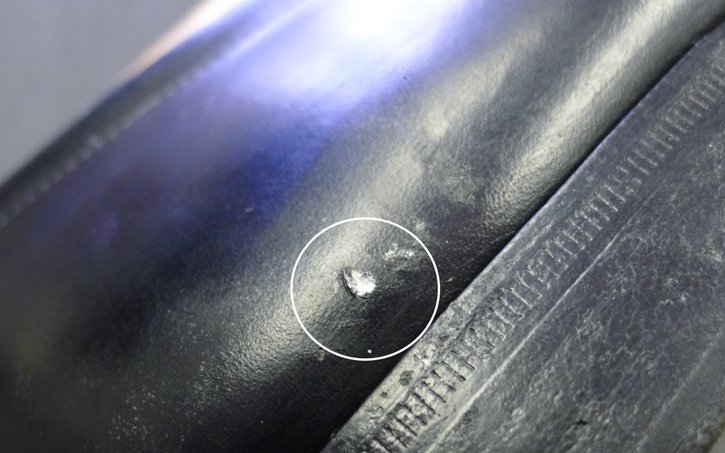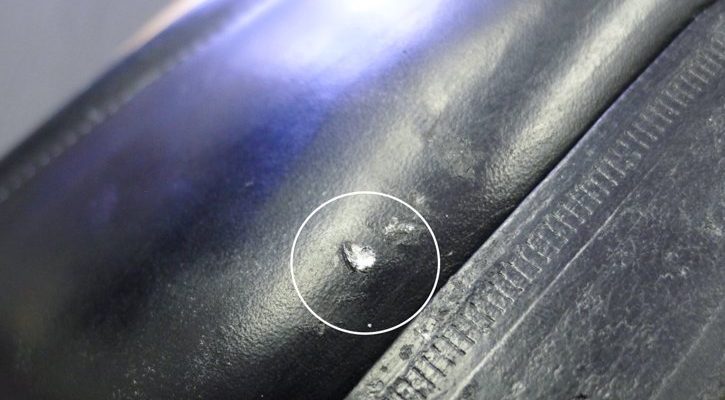
Here’s the thing: scratched kick plates aren’t just about looks. Those marks can make even a brand-new door look neglected, and over time, deep gouges can trap dirt or even lead to rust. If you’re using a popular metal kick plate, say from brands like Schlage, National Hardware, or Baldwin, you might wonder where you went wrong—or if you’re stuck living with the scuffed-up look. Let me walk you through why this happens, how to troubleshoot it, and what you can actually do to fix (and prevent) more shoe damage.
Why Do Kick Plates Get Scratched By Shoes?
Honestly, kick plates are in a tough spot—literally. Their whole job is to catch stray shoes, bags, or whatever else gets dragged through the door. But some doors seem to get scratched more than others, and it’s not always clear why. You might notice that homes with heavy traffic, kids bursting in and out, or folks carrying lots of stuff (think groceries, strollers, or even pets) tend to see those kick plates take a beating.
Most kick plates are made from materials like brass, stainless steel, or aluminum. These metals look great at first, but they all react a bit differently when they come in contact with rubber soles, grit, or even small pebbles stuck in shoe treads. Aluminum may dent and scuff easily, while brass shows marks but can be polished back to shine. Stainless steel is tougher but not immune to scratches.
You might be wondering, “Is it just my shoes, or is everyone fighting this battle?” The truth is, unless you remove your shoes every time you go in or out (not very practical), kick plate scratches are a pretty universal problem. The key is figuring out how to minimize the damage—or at least keep it from getting worse.
Checking Kick Plate Material and Finish
Before you can really solve the problem, it helps to know what kind of kick plate you’re dealing with. If you bought your own, check the packaging for details—brands like Schlage or Baldwin usually list whether it’s solid brass, anodized aluminum, or stainless steel. If it came with the house, try a quick magnet test (stainless steel is magnetic, aluminum is not), or look for tarnish (real brass darkens over time).
Different finishes also matter. A polished kick plate might look high-end, but it’ll show scratches more than a matte or brushed finish. Some plates have a protective coating (like lacquer) to help prevent scuffs, but over time, foot traffic can wear this down, making scratches easier to spot.
If you’re not sure, a close look in good light can reveal a lot. Notice if the scratches are silvery and bright, or darker and dull. Check for any spots where the finish has chipped off—this could mean the underlying metal is exposed, and you’ll want to act fast to stop rust or further damage.
Cleaning the Kick Plate Before Troubleshooting
Let me explain why jumping straight to repairs is a mistake. Scratches and scuff marks trap dirt, and sometimes what looks like a deep scratch is just embedded grime. Before you start any serious troubleshooting or repairs, you’ll want to get the kick plate *squeaky clean*.
- Use warm, soapy water and a soft microfiber cloth. Avoid rough sponges—they’ll just add to the problem.
- If there’s stubborn grime, a bit of white vinegar can help (but don’t use it on real brass without testing—it can damage some finishes).
- Rinse with clean water, dry completely, and inspect under bright light.
At this point, you’ll clearly see which scratches are just surface marks and which ones go deeper. Sometimes, a thorough clean can make even a scuffed-up kick plate look dramatically better.
Repairing Scratches On Metal Kick Plates
So, you’ve cleaned up and surveyed the damage. Now what? For most shallow scratches or light scuff marks, you’ve got a few easy fixes up your sleeve—no power tools or fancy supplies needed.
- For stainless steel: Use a non-abrasive metal polish or a fine stainless steel scratch remover. Rub gently in the direction of the grain. Always use a soft cloth and take your time—too much pressure can actually make scratches more visible.
- For brass: Try a commercial brass polish, or even a paste of baking soda and lemon juice. Rub gently and buff with a clean cloth. Don’t use anything too gritty, or you’ll end up with more scratches than you started with.
- For aluminum: Aluminum scratch removers or a dab of toothpaste (yup, really) can sometimes buff out light marks. Test a tiny area first to make sure you’re not dulling the finish.
For deeper gouges that catch your fingernail, repairs get trickier. You can try a fill-in wax or metal repair kit, but results vary. Sometimes, the best move is just to accept a bit of “character,” especially if your kick plate handles a ton of traffic.
Preventing Future Scratches from Shoes
Here’s where you shift from fixing to actually preventing more damage. The simplest answer is “Don’t kick the door,” but let’s be real—most scratches happen by accident. (And nobody’s training their dog to wipe its paws just yet.)
- Add a clear protective film: These are like phone screen protectors for your kick plate. They’re cheap, easy to cut to size, and peel off without leaving gunk behind.
- Switch to a brushed or matte finish: If you’re replacing your kick plate, consider a finish that hides scuffs. Polished brass looks amazing but is a magnet for visible shoe prints.
- Install a door sweep: These rubber strips at the bottom can take the brunt of scuffs and are super easy (and cheap) to replace if they get nasty.
- Encourage a shoes-off policy: It’s not for everyone, but if shoe scuffs are making you nutty, it might help—at least for family and close friends.
Honestly, most solutions involve a little bit of compromise. A kick plate with some marks is a sign your door is doing its job—just try to keep things from getting out of hand.
When Should You Replace a Kick Plate?
You might be wondering, “How do I know if my kick plate is beyond saving?” Here’s what to look for:
- Deep dents or bends that can’t be pushed flat
- Rust or corrosion spreading under the finish
- Large areas of flaking or peeling coating
- Gouges that collect dirt and are impossible to clean out
Often, replacing a kick plate is as easy as unscrewing the old one and lining up a new one. Most standard doors use similar hole patterns, especially across major brands. Universal fit plates are handy if you’re switching materials or want an upgrade that stands up to more abuse.
If you’re making the switch, look for plates with a thicker gauge or a textured finish to hide future wear. It also helps to save the screws from your old kick plate—they’re usually higher quality than what comes in the new box.
Comparing Different Kick Plate Materials for Durability
Not all kick plates hold up the same way under daily foot traffic. Here’s a breakdown of how common materials stack up:
| Material | Scratch Resistance | Ease of Repair | Cost |
| Stainless Steel | High | Moderate | Mid-High |
| Brass | Low-Moderate | High (polishable) | High |
| Aluminum | Low | Low | Low |
| Plastic/Composite | Moderate | Low | Low |
The bottom line? If scratches make you crazy, stainless steel is your friend, while brass offers a classic look you can polish yourself. Avoid aluminum if you want something built for abuse, and remember: even the toughest kick plate won’t win a showdown with a steel-toed boot.
Should You DIY or Call a Pro for Kick Plate Issues?
For the vast majority of scratches or basic kick plate swaps, you’re absolutely fine doing it yourself—no need to call a handyman. Most fixes are simple, and the most “advanced” tool you’ll probably need is a screwdriver. If you’re looking to install a new kick plate and want holes to line up perfectly, a quick measure with a tape measure goes a long way.
However, if your door is old, warped, or the kick plate is riveted instead of screwed on, you might find yourself running into trouble. Trying to force a new plate onto a misaligned or damaged door can lead to bigger headaches. If you’re unsure about cutting or drilling into a custom door, it’s smart to ask a local pro—or at least a hardware store expert—for advice.
Sometimes a scratched kick plate is just a tiny problem you can live with, and sometimes it’s a sign your entryway deserves a little more TLC. Either way, tackling it head-on never hurts.
Wrapping It Up: Keeping Your Kick Plate (and Door) Looking Its Best
Living with a scratched kick plate doesn’t mean you’ve failed as a homeowner—it just means your door is getting used, which is exactly what it’s there for. But a little bit of cleaning, the right repair tricks, and some simple prevention can keep things looking sharp. Whether you stick with your current kick plate or decide it’s time for an upgrade, you’ve got plenty of options that don’t require a pro—or a full weekend project.
At the end of the day, it’s all about balance: you want your home to look cared for, but you don’t want to be stressed by every scuff or scrape. With a few easy tweaks, your kick plate can keep taking those hits—and still look good doing it.
